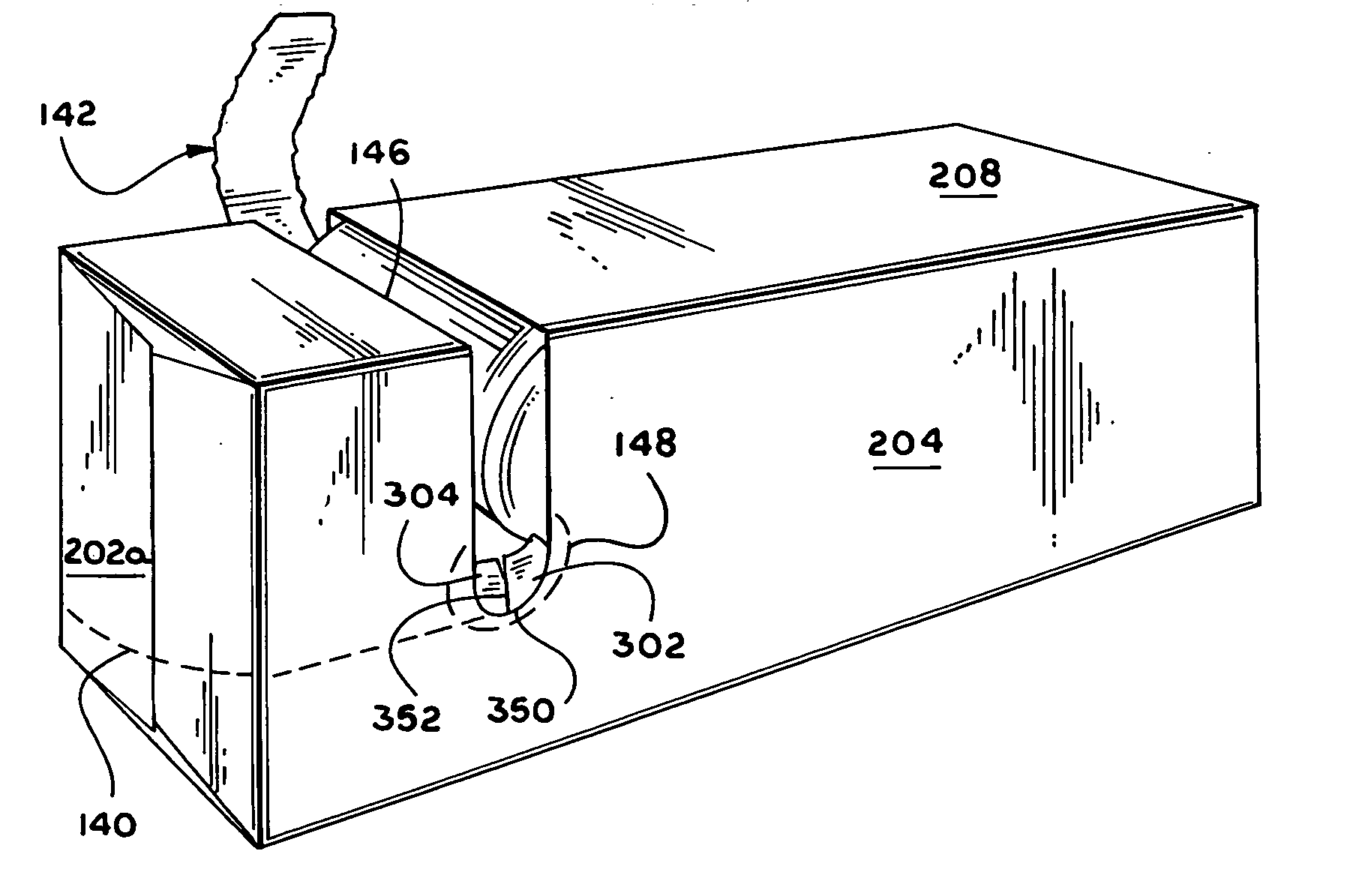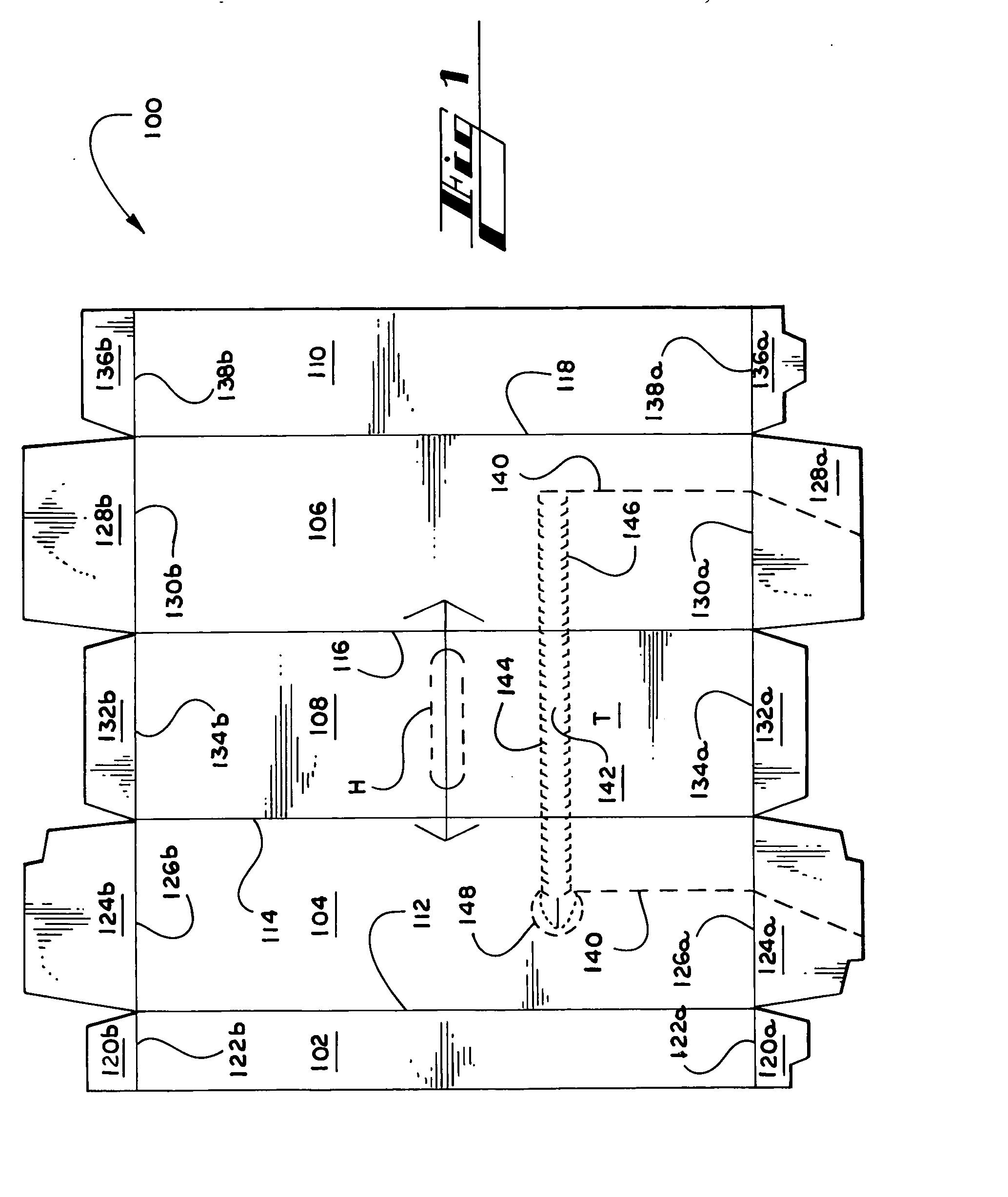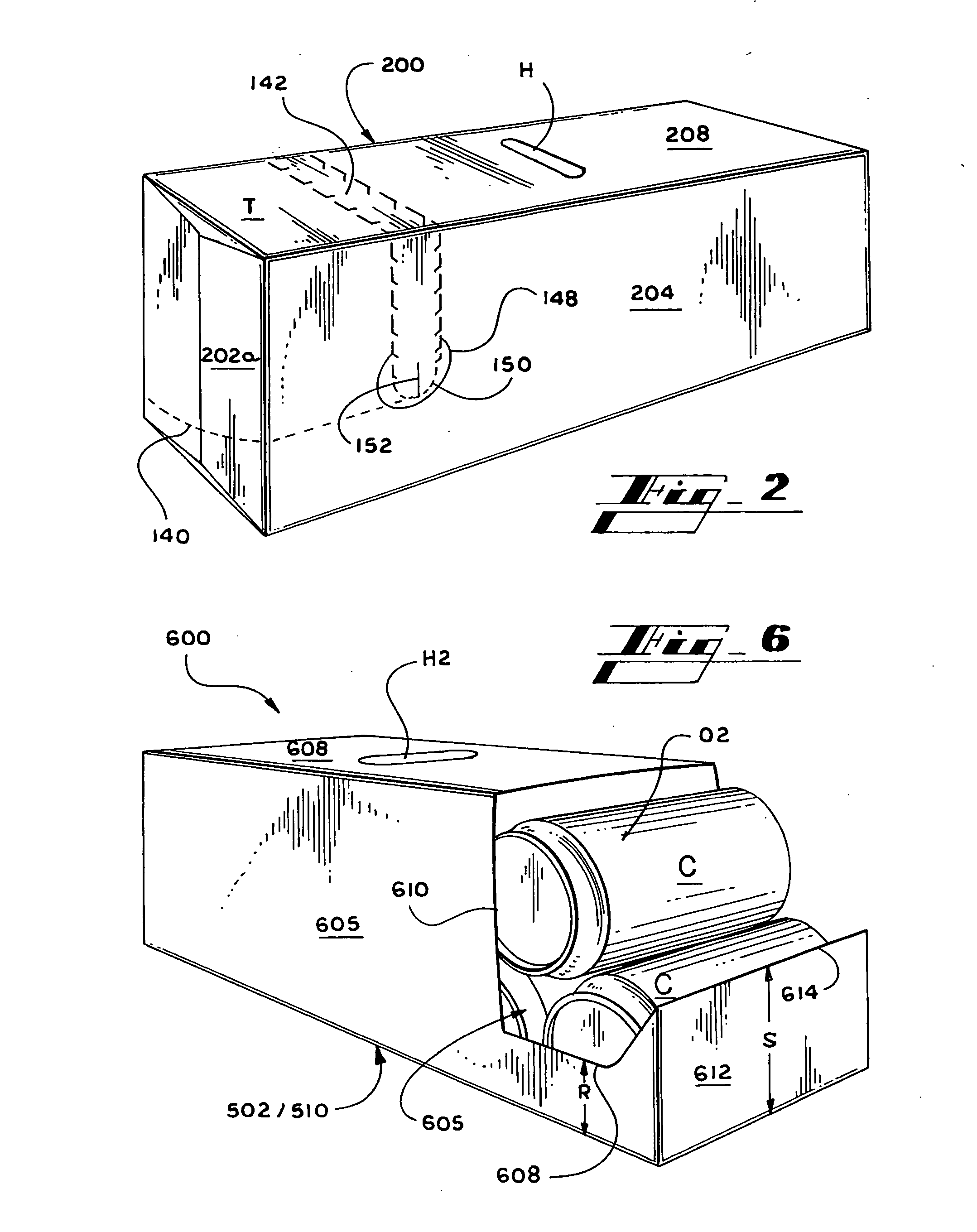Carton with two-step opening feature defining yieldable dispenser
a dispenser and two-step technology, applied in the field of cartons, can solve the problems of undesirable tearing of the detachable section into two or more pieces, difficult to separate a single piece, etc., and achieve the effect of reducing the effort required to access articles in the carton and improving the retention of articles remaining in the carton
- Summary
- Abstract
- Description
- Claims
- Application Information
AI Technical Summary
Benefits of technology
Problems solved by technology
Method used
Image
Examples
first embodiment
[0047] Referring to a first embodiment shown as FIG. 1, carton 200 is formed from a paperboard blank 100. The blank 100 includes at least four primary panels for forming the carton 200. The panels of the blank 100 are a first bottom panel 102, a first side panel 104, a second side panel 106, a top panel 108, and a second bottom panel 110. The panels 102, 104, 106, 108, and 110 of the blank 100 are hingedly connected to one another. The bottom panel 102 is hingedly connected to the first side panel 104 by fold line 112. The first side panel 104 is then hingedly connected to the top panel 108 by fold line 114. The second side panel 106 is then hingedly connected to the top panel 108 by fold line 116. The second bottom panel 110 is then hingedly connected to the second side panel 106 by fold line 118. In the illustrated embodiments, a unitary blank is used to form a single carton, although it should be recognized that two or more blanks may be employed for example, to provide the dispe...
embodiment 1300
[0079]FIG. 13 illustrates an alternative embodiment 1300 of blank 1200. First detachable portion 1350 defined by frangible lines 1340, 1342, 1344, 1346, and 1348 has the same shape as fully detachable portion 1250 described above. The blank 1300 is similar to blank 1200, described above, except that only two separation means 1364, 1366 are required to partially detach opposing yieldable portions because fold line 1370 and fold line 1372 each extend completely across respective side panels 1304 and 1306. Fold line 1370 extends from separation means 1364 across side panel 1304, and terminates at the intersection of fold lines 1326a and 1312. Fold line 1372 extends from separation means 1366 across side panel 1306, and terminates at the intersection of fold lines 1330a and 1318. This alternative creates potentially larger yieldable portions, which requires less effort and fewer steps on the part of the consumer to partially detach each yieldable portion. In a variation of this embodime...
PUM
| Property | Measurement | Unit |
|---|---|---|
| rigid retention | aaaaa | aaaaa |
| height | aaaaa | aaaaa |
| diameter | aaaaa | aaaaa |
Abstract
Description
Claims
Application Information
 Login to View More
Login to View More - R&D
- Intellectual Property
- Life Sciences
- Materials
- Tech Scout
- Unparalleled Data Quality
- Higher Quality Content
- 60% Fewer Hallucinations
Browse by: Latest US Patents, China's latest patents, Technical Efficacy Thesaurus, Application Domain, Technology Topic, Popular Technical Reports.
© 2025 PatSnap. All rights reserved.Legal|Privacy policy|Modern Slavery Act Transparency Statement|Sitemap|About US| Contact US: help@patsnap.com



